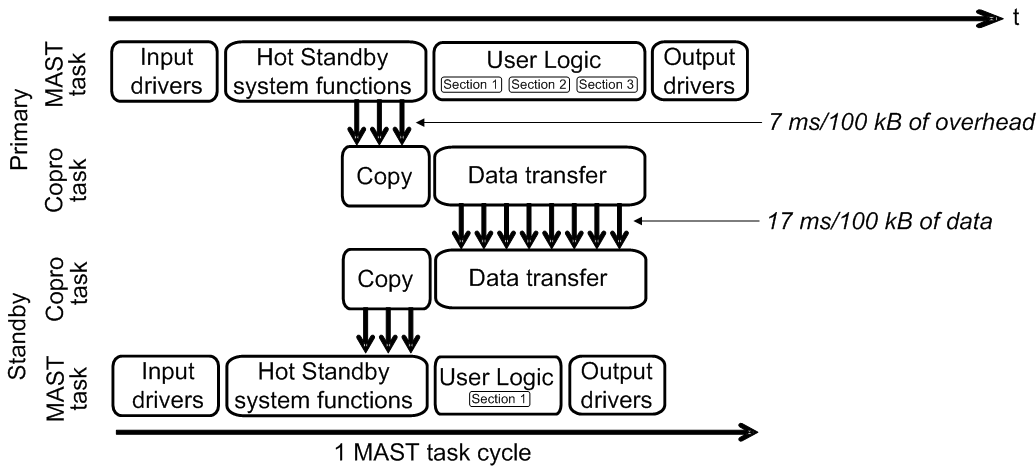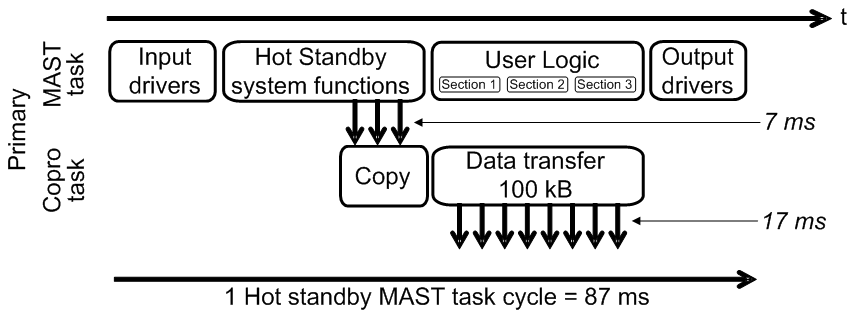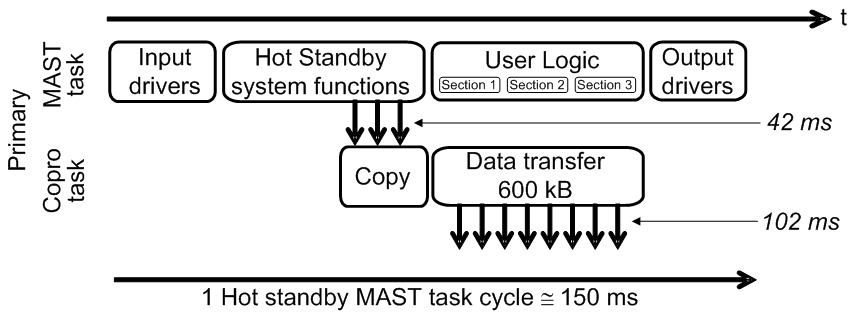Effect on System Scan Time
The scan time of any Quantum Hot Standby system depends on the amount of data transferred.
Because data must be transferred from Primary CPU to Standby CPU, any Quantum Hot Standby system has a higher scan time than a comparable standalone system.
NOTE: In a Quantum Hot Standby system these 2 processors work in parallel:
This reduces transfer times between the PLC and Control Expert.
NOTE: Do not set the period of periodic MAST task below 30 ms.
Performance Considerations in 140 CPU 67• ••
A Quantum Hot Standby system increases the length of a MAST scan, creating system overhead.
NOTE: System overhead is the time required to copy the application data to the communication link layer.
The network scan (communication between Primary CPU and Standby CPU Copros):
A Hot Standby system with a 140 CPU 67• •• is illustrated below:
Most of time, the MAST scan is greater than the network scan.
However, when processing some application programs, additional system overhead may occur.
For this example:
The Hot Standby MAST cycle is greater than the Standalone scan time only by the Hot Standby 7 ms overhead.
For this example:
The Hot Standby MAST cycle is much greater than the Standalone scan time because of the long data transfer time.
NOTE: The time transfer of 17ms/100Ko is valid for a size of 100ko data and more, if there is less data to exchange between PLCs, there is an uncompressed time of 15ms that should be added (Heartbeat for logic mismatch, memory check, firmware versions check, EIO drops activity bits check...). More over, if one CPU is in offline mode, the cheking time could increase (usually 5ms more).


